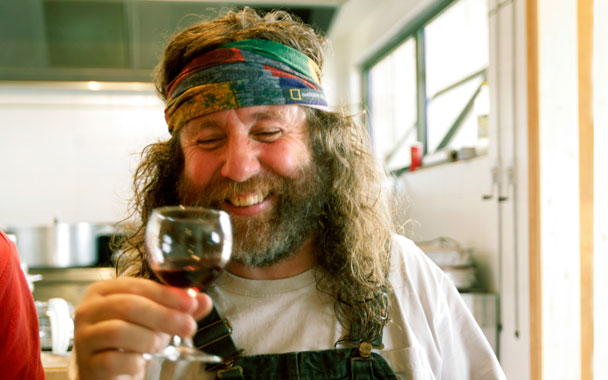Pouilly-Fumé tends to be overrated, devoid of the smoky mineral tone that supposedly lends the region’s Sauvignon Blanc wines the “fumé” part of their name, which is why I was knocked out the first time I ever tasted a wine from Didier Dagueneau. It was in the middle of a blind tasting—that is, we didn’t know anything about the glasses on the table save the vintage and the appellation. We’d already tried enough mediocre Pouilly-Fumé to want nothing more than to finish and move on, when something way more interesting popped up. It was a Pouilly-Fumé suffused with flavor—not obvious Sauvignon Blanc notes of gooseberries, grass or cat pee (some Sauvignon really can smell like a bush that’s been doused by a feral cat)—but more like quartz, yet creamy, as if the wine had been carved from minerals and then liquefied, mounted with butter and whisked until it was rich, silken yet weightless.
The wine, it was later revealed, was Didier Dagueneau’s Silex, named for the soils on which it grows, which are rich in flint (silex, in French). Dagueneau, who died last week when the ultralight plane he was flying stalled after takeoff, was devoted to the appellation, a small area of France’s Loire Valley just across the river from Sancerre. He was known as “the wild man of the Loire,” in part because of his looks—big, bedraggled and bushy, a bandana sometimes wrapped around his long mane of hair without really helping to contain it. He’d also been a motocross racer before becoming a vintner; afterward, his love for thrills led him to become an expert dogsled racer, practicing between harvests.
That daring carried over into his winemaking. The 1980s weren’t a good time for Pouilly-Fumé; high yields and conventional farming were the norm. But Dagueneau planted his vineyards extremely densely (the idea being that the harder they have to compete for nutrients, the less vigorous the vines will be, and the more concentrated the grapes), farmed organically, and took draconian measures to keep yields down, pruning hard and dropping lots of fruit before it was ripe so that the vines could focus their energies on the remaining bunches. Then he let the grapes ripen much longer than those of his neighbors, and harvested every last bunch by hand. He also used oak barrels to ferment and age his wines. Although it often seems hard these days to find a white wine that isn’t somehow flavored with oak, it was nearly unheard of in Pouilly-Fumé in the 1980s, when the fashion was for cleaner, faster fermentations in stainless steel tanks. He wasn’t looking for oak flavor (as is common today), but for wines with more texture and complexity.
The result was small amounts of vivid Pouilly-Fumé, wines that traded the typical light lime notes of Pouilly’s Sauvignon for full fig and passion fruit flavors layered with smoke and minerals and supported by a steely backbone of acidity. In some vintages, the acidity and mineral expression could make the wines downright mean at first—and that was okay, both because Dagueneau believed in making wines that reflected the vintage, and because his wines could age, giving them time to mellow.
Dagueneau wasn’t too well liked by many of his neighbors, who resented him for talking openly of the region’s high yields, and for garnering raves on his high-priced wines, but he had what it took to be a first-rate vintner: a single-minded desire to create something great, something lasting, and a daredevil’s attitude when it came to figuring out how it might be achieved. He will be missed.



 Pinterest
Pinterest


